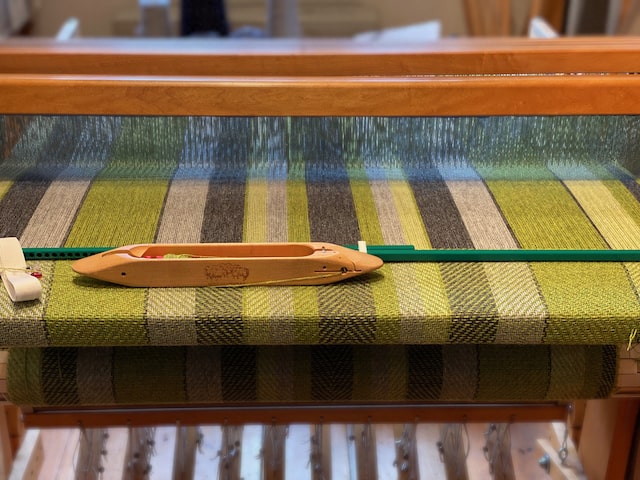
Twill or Be Twilled
Hi weavers – I am working on a new pattern for a series of swellegant pillow covers in twill, and serendipitously, while working on the “twillow” pattern, I have been reviewing Becky Ashenden’s video series in which she recreates her excellent Basics class (a class she has been teaching at the Vävstuga Swedish Weaving School for 30 years). Twill is covered extensively in the Basics drafting classes, and so twill has been on my mind. The tempting abundance of annoying puns that haunt me when I am thinking of twill is matched only by the DELIGHTFUL abundance of variations that twill offers for weavers whether of the stolid 4-shaft variety or the megalomaniacal (jk – I am one of you) 16-32 shaft variety.
BUT, before we venture into the (SORRY) twilling world of twills, I want to do a little reader show and tell and a mini detour into deflected double weave.
I received these amazing pix from reader Martha Town with this description:
In the 90’s I was inspired by a Nova program that showed the macroscopic structure of crystals are actually a reflection of their microscopic structure. Based on this, I designed a 16 shaft block twill with four blocks. Each block was a 4 shaft broken twill (microscopic) and I wove the four blocks in a broken twill order (macroscopic)
This shows both sides of the fabric, The gray warp is a cashmere blend, and the blue weft is rayon. You can see that the structure of each block is a 4 shaft broken twill ( 1234 2143) . Then the blocks are used in the same order. The NOVA program was called “The Shape of Things”, and was aired in 1985. I found the transcript in my files with my samples!
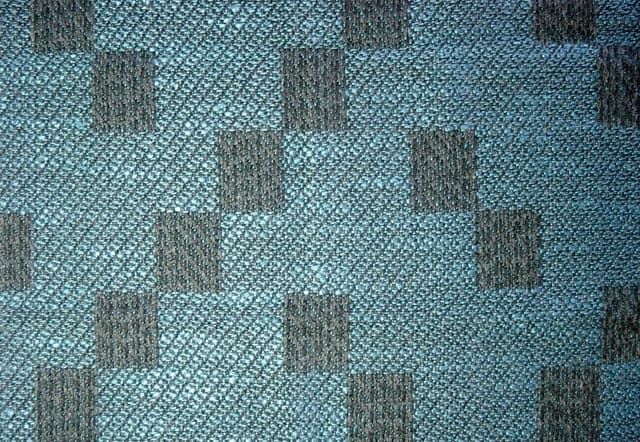
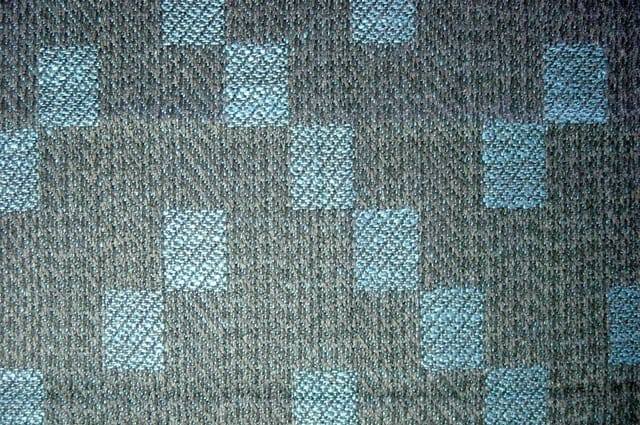
The concept of “meta” fully realized in cloth. Brava Martha!
After my last blog post I also received some sweet beauty pix from Mary Thomas Reilly of the Grand Honeycomb pillow tops she wove using American Maid Cotton. I am very excited to see the pillows sewn up. The fabric looks dreamily dimensional. Beautiful weaving Mary!
Mary did mention that the floats in the spiderweave version seemed loose in both warp and weft. I didn’t notice it as a problem when I wove my pillowtop, but as you can see the floats do ride pretty freely on the surface of the fabric. I am hoping they will tighten up once the pillow form is inserted and stretches the base fabric a little. In any case, it is a good reminder that Grand Honeycomb may not be the best choice for households with small children or claws (canine/feline or other:)
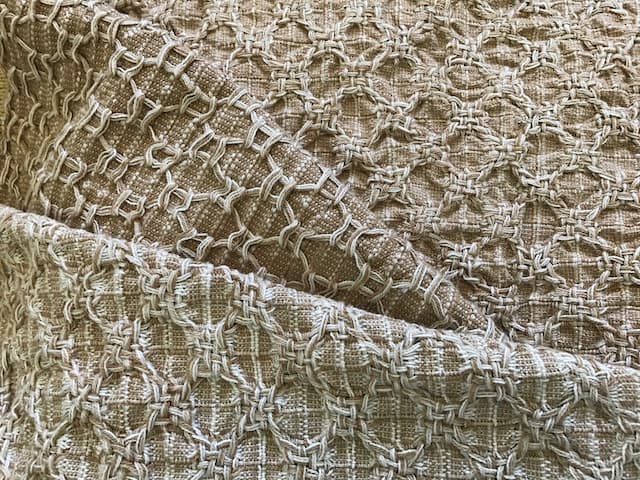
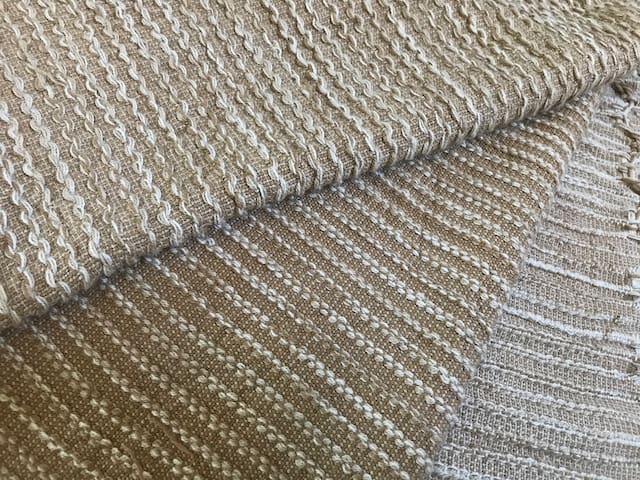
For some more eye candy, Véronique Perrot, tech editor from heaven and fearless deployer of color, wove up a slew of Mosaic Towels in a colorway on the cool side of the color wheel. She played with treadling variations and also tightened the sett from 20 to 24. I hope you are okay with a big oh là là Véronique ❤️
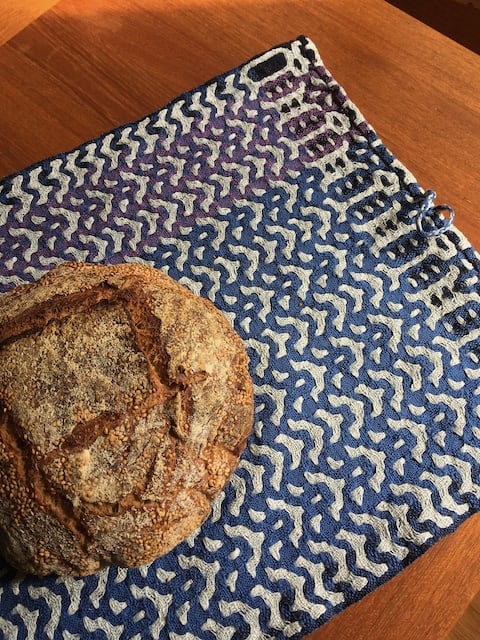
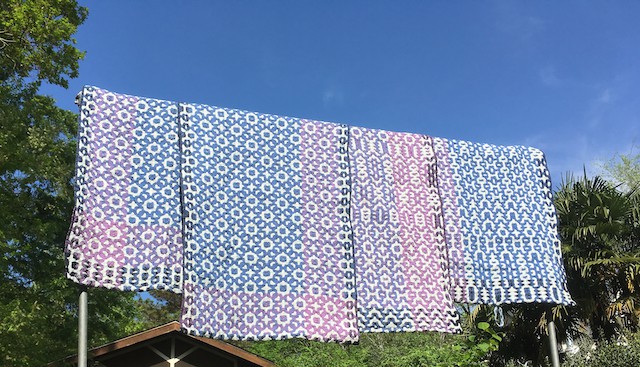
Véronique’s colorway brings up something interesting about this pattern and many def dw designs. How you choose which color or set of blocks you want to come forward and which you want to recede really impacts the look of the towel. In Véronique’s colorway circles surrounding a small star is the motif I see clearly. What I think of as the “flower” shape is in the navy and recedes. So we can see that what elements of the design come forward or recede depend on the hue and value arrangement one chooses. According to common color wisdom, cool colors recede and warm colors come forward. Dark colors recede and light colors come forward. In the towels below the “flower” is apparent because the warm, lighter color (magenta) comes forward and the orange-y grid draws your eye to the motif.
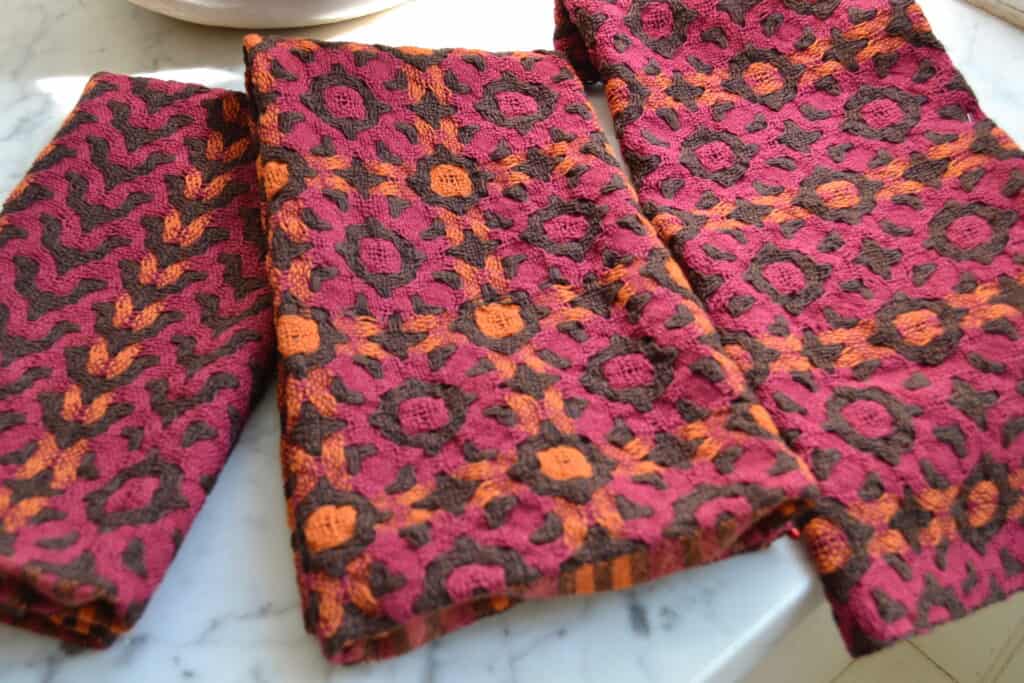
In the pic below the values (light/dark) of the two main colors are very similar (making the motif much more subtle or way less vivid depending on your taste), but the yellow is just a shade warmer/brighter and therefore comes forward.
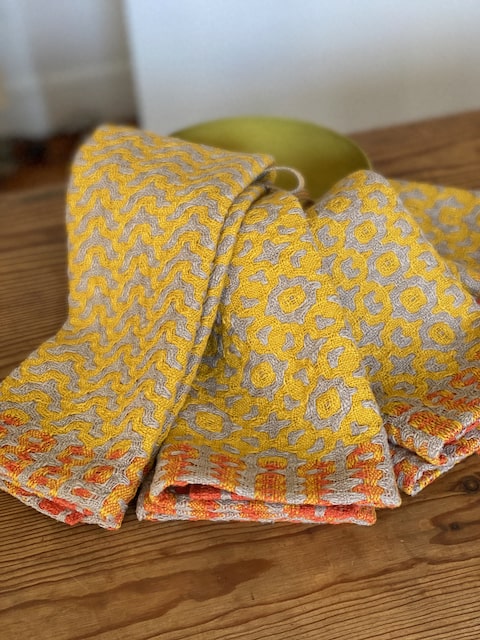
In the following black and white variations, it is a little harder to tell because we there hasn’t been the deflection we would see in the finished cloth, but to my eye the flower motif is more apparent in the white flower sample. The crosses and central squares (circles once washed) are dominant in the black flower sample because the “flower” is in black and recedes.
There is no right way, and like the “magic eye” puzzles ,your eye may shift focus and see different motifs at different times.

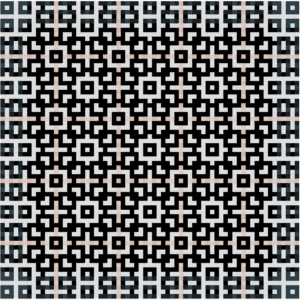
Below we have yellowy green coming forward and red violet receding. This makes the flower pop in the first arrangement but become indistinct in the second. Both colors are “cusp” colors yellow(warm), green (cool) and red(warm), violet (cool). So the values seem to speak more forcefully, i.e., light coming forward, dark receding.
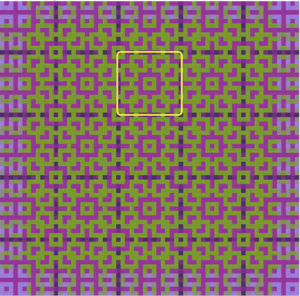
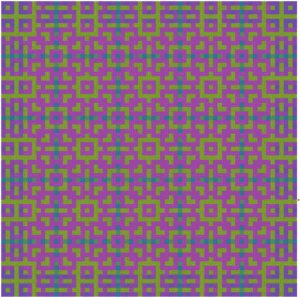
After that short digression 😳 do we have time to talk twill?
Sadly no, but once I gather my thoughts and write it all out I might have a blog twillogy . . . Pun haters please don’t unsubscribe!

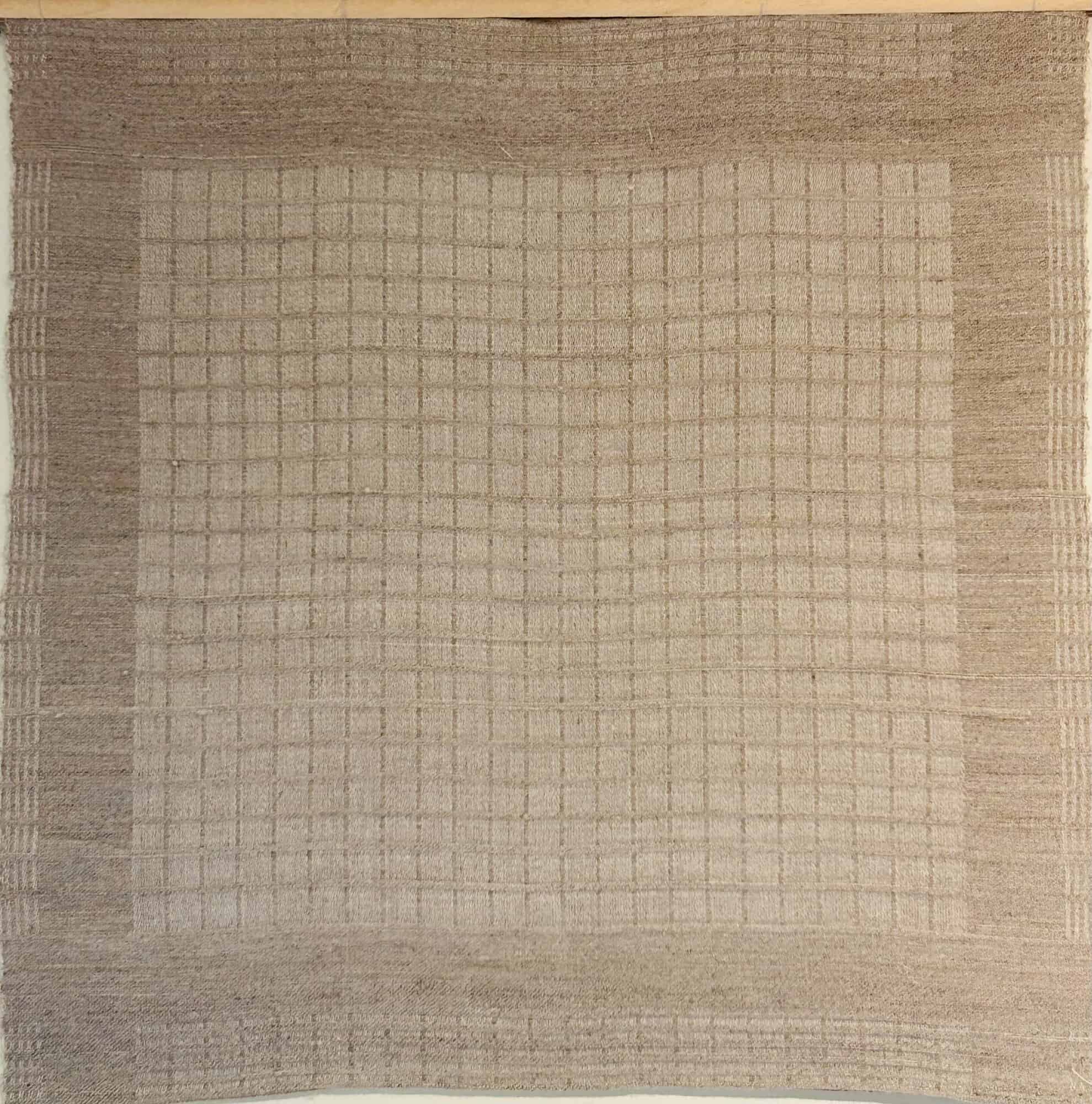
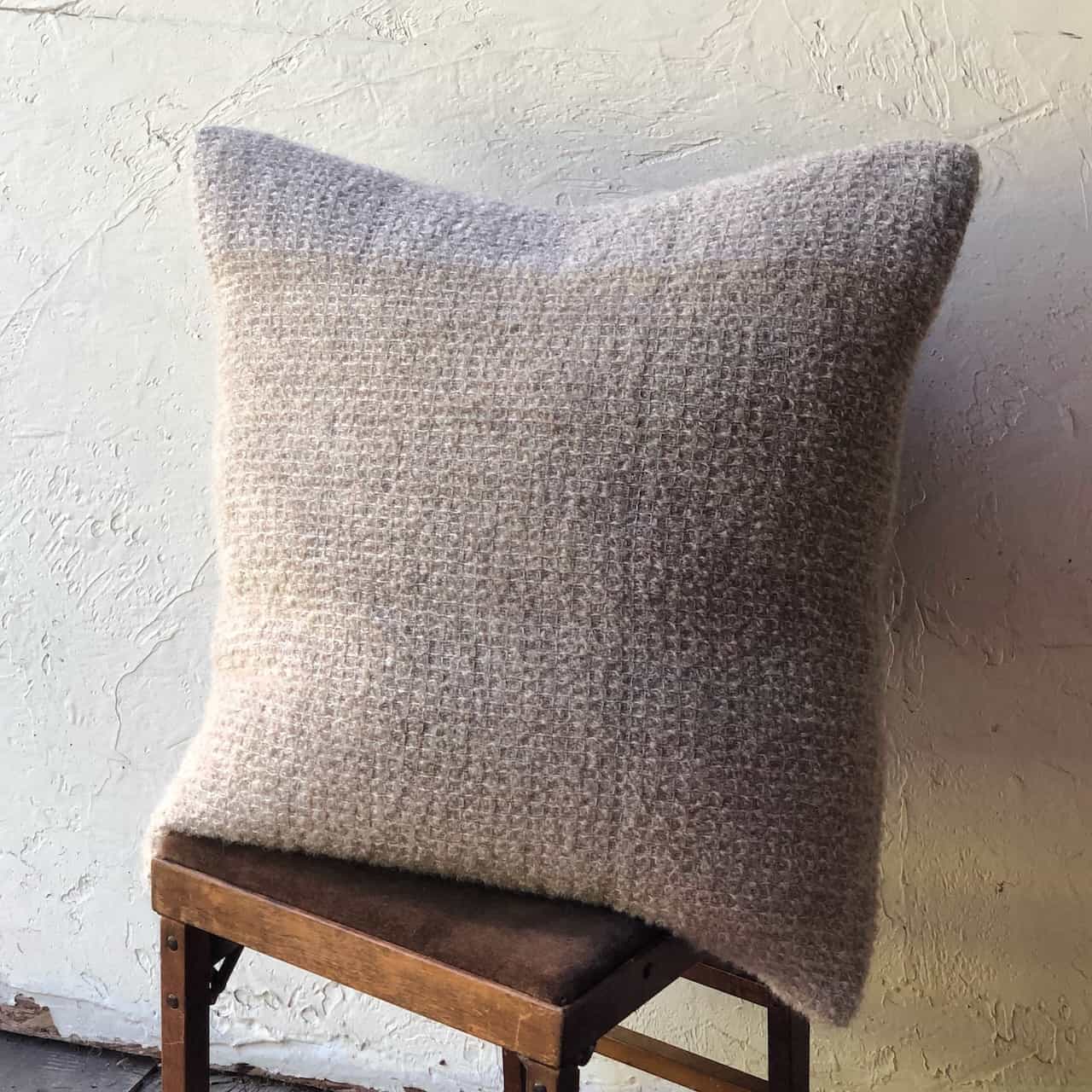
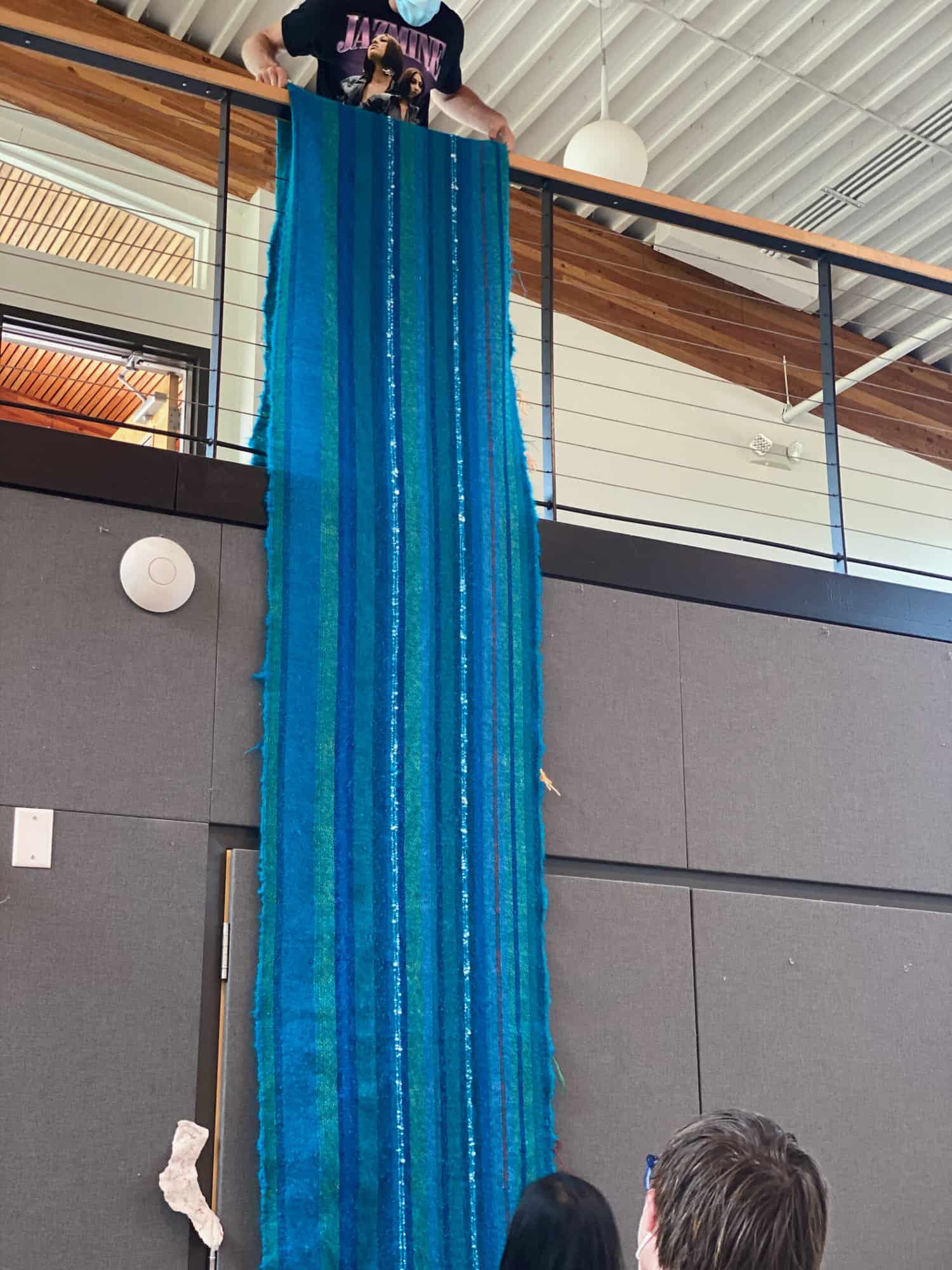
Jill Staubitz
As always, a wonderful blog! Thank you again Elisabeth! Beautiful colors. Thanks for including pics from weavers as well.
Elisabeth Hill
Thanks for the comment Jill. I am so happy to have reader pix to add to the adventure.
Judy Lepthien
I love your sense of humor and play on words. We all need to laugh more. Thanks as always.
Elisabeth Hill
Thanks for reading Judy – I just got first vaccine shot so maybe we can laugh together IRL soon!
Mary THOMAS-REILLY
I love reading your blog! I enjoyed seeing all the photos. Thanks for the lesson in color too.
Elisabeth Hill
Thanks for sending pix Mary!!!
Fran
Your blog with your ideas is about the only time I wish I had more than 4 shafts. I’m sticking with them, but still enjoy and admire your cloth.
Elisabeth Hill
Hi Fran,
Fantastic four! My weaving mentor Ute Bargmann use to say, “use your brain, not more shafts!”😂